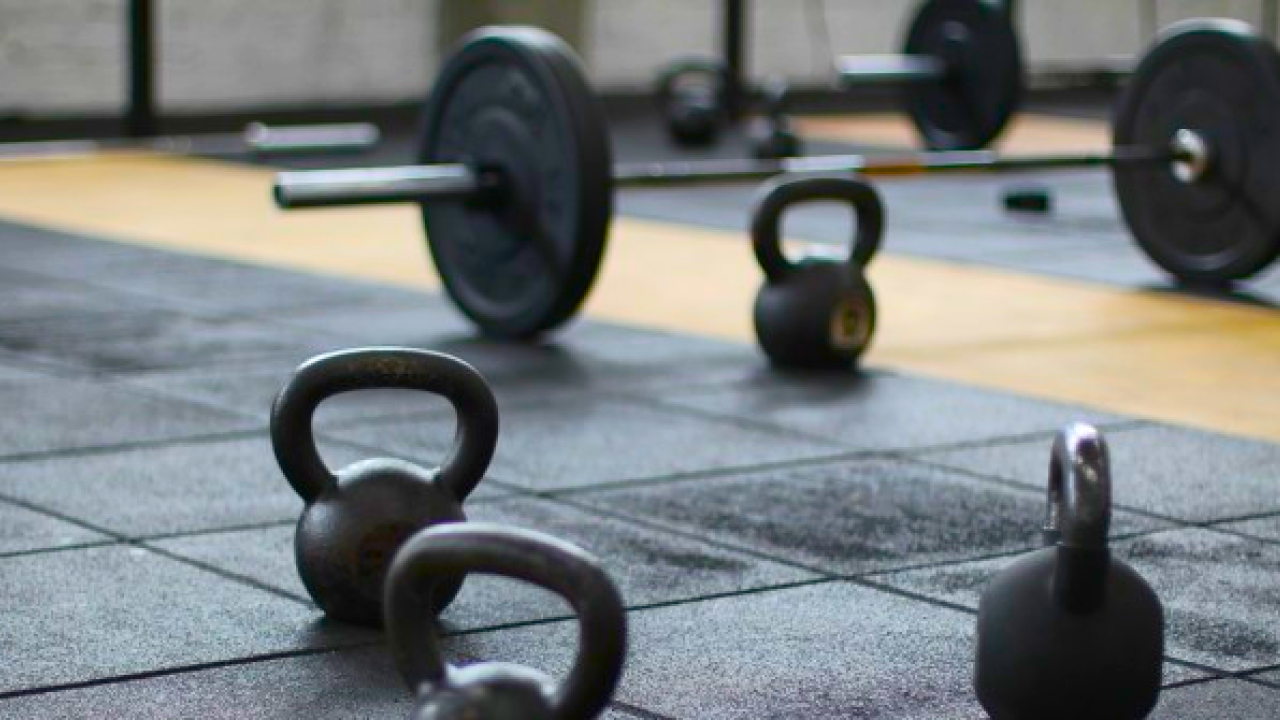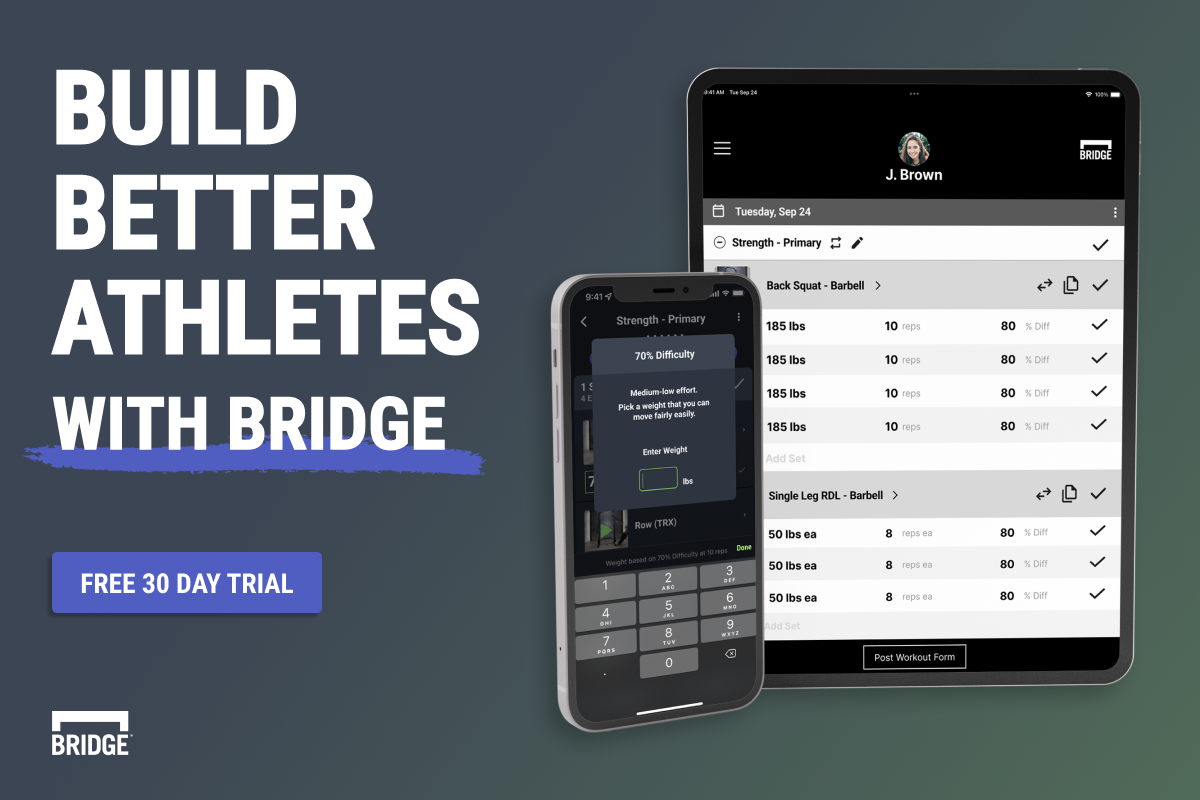Barbells vs. Kettlebells: The Ultimate Combo for Fitness
This post is part of our Coaches Corner series with Taylor Rimmer. Taylor is NSCA-CPT, StrongFirst SFG 1, and owner of Revive the Human in Longmont, Colorado, and has been a Bridge customer since 2019.
Barbells vs. Kettlebells
It’s a debate that’s raged in fitness forums for years. While some argue in favor of one or the other, the truth is that each has unique benefits that can make a significant difference in your training program.
So, what’s the answer?
Truth is, if you rely solely on barbells or kettlebells for your training program, you’re likely leaving serious gains on the table.
Barbells are known for their ability to handle heavier loads and are essential for competitive powerlifting and Olympic lifting. They also tend to be more straightforward to use, making them an excellent choice for beginners. However, training with barbells can be cost and space prohibitive for home gym enthusiasts, considering you need both plates and a rack to perform the most popular exercises.
On the other hand, kettlebells are known for their ballistic and unilateral-friendly design, which is perfect for enhancing athleticism, conditioning, and unilateral strength. They are also more compact, making them an ideal choice for at-home workouts. However, they do have their limitations, particularly when it comes to lifting heavy weights - like 1-rep PR's.
The good news is that you don't have to choose between barbells and kettlebells. In fact, most well-rounded training programs should include both. By incorporating both tools into your routine, you can take advantage of the unique benefits of each and maximize your results.
“Overall, I think kettlebell lifts remain underrated or overlooked. Generally, it seems the more a coach likes barbells, the less they like kettlebells. I integrate both barbell and kettlebell movements into our programming, because I think each have unique benefits,” says Taylor Rimmer.
Rimmer includes both barbell and kettlebell exercises in most of his programs — provided clients have access to both. Barbells are mainly utilized to build max strength, while kettlebells serve as a potent tool for enhancing athleticism, conditioning, and unilateral strength.
"Barbell, kettlebell, and bodyweight exercises are the core of our programs."
Rimmer trains a variety of clients ranging from gen-pop to powerlifters, military personnel, sport climbers, mountain bikers, bouldering athletes, etc. Even with all of his different clients, he likes to keep his exercise selection simple. Here are a few of his top exercises for both barbells and kettlebells:
Rimmers Top Barbell Exercises:
|
Rimmer’s Top Kettlebell Exercises:
|
As you can tell, Taylor has a lot of favorite movements - how can you pick just one?! But the one kettlebell exercise he inserts into almost everyone’s program...
The Turkish Get-Up
“The Turkish Get-Up is a secret sauce for keeping people’s shoulders bulletproof. We never have shoulder issues, and I think it’s because everyone’s doing Get-Ups,” says Rimmer.
Rimmer says he likes TGU's because it teaches people how to move. "When you first teach someone the get-up, they feel very uncoordinated. A few weeks later, they feel pretty coordinated and connected getting off the ground — they’ve got proper alignment, proper engagement."
Having proper alignment and proper engagement isn't just valuable if you're a top athlete.
"All that stuff is super valuable — both for our general population clients who just want to feel good and preserve a high quality of life, as well as special populations like our military members or rock climbers. You’ll actually see pieces of the get-up in the middle of a rock climb or when someone’s scrambling up a mountain — it shows up all over the place.”
Video: Turkish Get Up Demo
Integrating with Bridge
The good news is that you can easily incorporate both barbells and kettlebells into your routine using technology. Since many of Rimmer’s clients are virtual, he must create programs that account for a wide variety of circumstances. The Bridge app makes it easy to integrate his preferred methodologies without sacrificing control over the finer details.
“The first decisions about exercise choice are made regarding what equipment the trainee has available—if they have access to barbells/squat racks, we will almost always use them. The same goes for kettlebells — if they have access to heavy KBs, we will almost always use those, too. Everybody has access to bodyweight exercises, so pull-ups, push-ups, hanging leg raises, etc., are featured in most of my programs,” says Rimmer.
Obviously, Taylor would like to program everything the same way for all of his clients but with them all having different access to different kinds of equipment, he has to find a way to easily program these adjustments. That's where Bridge comes in -- Taylor is able to include different exercise alternatives within his programming making it easier for him and his clients to choose their poison 😜.
“The Bridge app makes it simple to program exactly what I want in a fast, impactful way. We don’t do cookie-cutter programs, and we need technology that supports that. When I think back to all the time I spent fooling around with spreadsheets and word docs, it’s a night-and-day difference with Bridge.”
Wherever your preferences lie, there’s no debate that the variety and well-roundedness of barbells and kettlebells are important to any effective program. That's why Bridge delivers both pre-built templates plus endless options to customize workouts to your liking. Try it free for 30 days.
About the Author

At Bridge, we are all athletes and coaches first. As athletes, our team has experienced everything from riding the pine on JV, to winning NCAA championships, to competing in the Olympic Games. As coaches, we have helped countless athletes reach their full potential, winning everything from age group section championships to Olympic Gold Medals.



